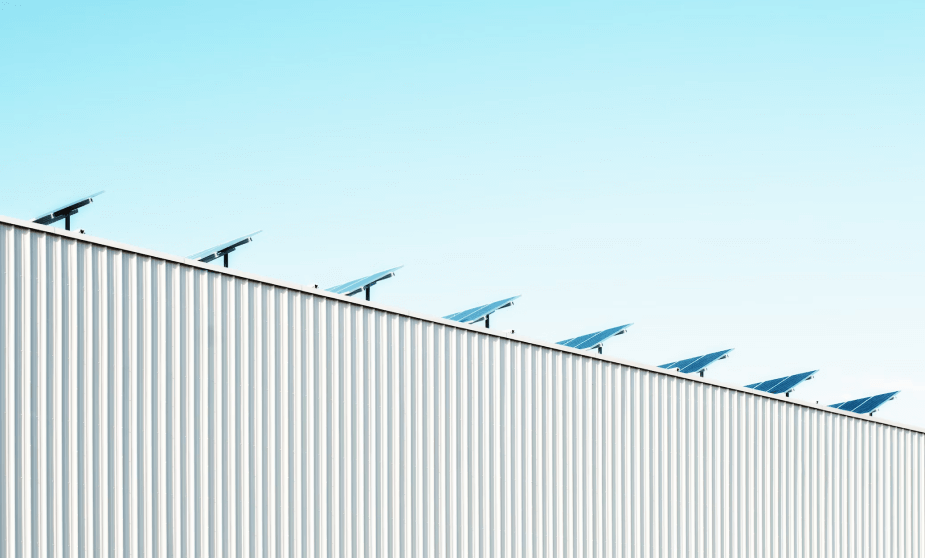Insights
Understanding the ROI of Solar Energy for Your Business
- 10/07/2024

Solar energy is no longer just an environmentally conscious choice—it’s a smart financial decision for businesses looking to optimize costs and enhance profitability. One of the key questions businesses ask when considering solar power is: what’s the return on investment (ROI)? In this post, we’ll break down how businesses can calculate the ROI of solar installation, the financial benefits over time, and why solar energy is a sound long-term investment.
How to Calculate the ROI of Solar Installation
Calculating the ROI of a solar energy system involves comparing the upfront cost of the installation with the long-term savings it generates in energy costs. The ROI calculation typically involves the following factors:
- Initial Investment: This includes the cost of purchasing and installing the solar panels, inverters, mounting equipment, and any necessary electrical work. Keep in mind that many financing options and tax incentives can reduce this upfront cost (more on that later).
- Energy Savings: Solar panels generate electricity, reducing the amount of energy you need to purchase from your utility provider. To calculate the energy savings, businesses should consider how much electricity they currently use and how much of that usage can be offset by solar.
- Payback Period: This is the amount of time it will take for your energy savings to cover the cost of the solar installation. Most businesses experience a payback period between 5 to 10 years, depending on system size, location, and energy needs.
- Total ROI: After the payback period, every kilowatt-hour (kWh) of electricity generated by your solar panels effectively translates into cost savings. ROI can be calculated using this formula:ROI (%)=(Total Energy Savings – Initial InvestmentInitial Investment)×100\text{ROI (\%)} = \left( \frac{\text{Total Energy Savings – Initial Investment}}{\text{Initial Investment}} \right) \times 100ROI (%)=(Initial InvestmentTotal Energy Savings – Initial Investment)×100
The Lifespan of Solar Panels and Financial Gains Over Time
One of the major advantages of solar panels is their longevity. Most high-quality solar panels come with warranties that guarantee performance for 25 to 30 years. Here’s how the financial gains accumulate over time:
- Durability: Solar panels have no moving parts, which means they require very little maintenance over their lifespan. Once installed, they continue to generate electricity for decades, providing consistent savings long after the system has paid for itself.
- Degradation Rate: Solar panels experience a slow degradation of output, typically around 0.5% to 1% per year. Even with this small decrease, the panels will still produce around 80-90% of their original capacity after 25 years, making them a strong long-term investment.
- Increased Property Value: Studies show that buildings equipped with solar energy systems tend to have higher property values. Prospective buyers are often willing to pay a premium for properties that offer energy savings, further adding to the ROI.
The Impact of Utility Savings on Your Company’s Financial Health
One of the most immediate benefits of solar energy is the reduction in monthly utility bills. For businesses, this can have a significant impact on overall financial health:
- Immediate Cost Reduction: Solar panels allow your business to generate a portion, if not all, of its electricity on-site. This reduces your dependence on grid electricity and can lead to substantial savings on utility bills.
- Protection Against Rising Energy Costs: Utility prices fluctuate based on fuel costs, regulations, and market demand. By investing in solar, businesses can lock in lower energy costs and protect themselves from future rate hikes.
- Net Metering: Many regions offer net metering programs, which allow businesses to sell excess energy generated by their solar system back to the grid. This not only further reduces energy costs but can also result in energy credits or financial returns.
The cumulative effect of these savings improves your business’s bottom line, freeing up resources that can be reinvested into operations, growth, or other strategic initiatives.
Solar Financing Options and Government Subsidies
One of the concerns many businesses have about solar is the upfront cost. However, there are various financing options and government incentives that can make solar more accessible:
- Solar Loans: Many banks and financial institutions offer low-interest loans for businesses investing in solar energy. These loans often have flexible repayment terms that allow businesses to pay off the system over time while still reaping the benefits of energy savings.
- Power Purchase Agreements (PPAs): In a PPA, a third-party company installs and maintains the solar system, and the business agrees to purchase the electricity generated at a lower rate than traditional utility prices. This allows businesses to adopt solar with no upfront costs.
- Leasing: Solar leases are another option where the business leases the solar panels from a third-party provider. While the company doesn’t own the system, it still benefits from lower energy costs.
- Tax Incentives and Rebates: In many regions, businesses can take advantage of tax credits and rebates to reduce the cost of solar installation. For example, the U.S. federal Investment Tax Credit (ITC) allows businesses to deduct 30% of the cost of a solar installation from their taxes. There are also local rebates and grants available in various regions.
Examples of Businesses That Have Experienced Positive ROI with Solar Energy
Many businesses across various industries have successfully implemented solar energy systems and experienced a strong ROI. Here are a few examples:
- Target: As one of the largest retailers in the U.S., Target has invested heavily in solar energy, installing panels on the rooftops of many of its stores. These installations have allowed the company to significantly reduce energy costs and position itself as a leader in sustainability. In 2020, Target was named the top U.S. corporate solar user by the Solar Energy Industries Association (SEIA).
- Google: Google has long been committed to renewable energy, with solar playing a key role in its sustainability strategy. The tech giant has installed solar panels at many of its offices and data centers, leading to millions in energy savings. Google’s investment in solar has also contributed to its goal of running 100% on renewable energy.
- Whole Foods Market: This national grocery chain has invested in solar energy as part of its effort to reduce its environmental footprint. Whole Foods Market has installed solar panels on over 25 locations, leading to significant savings in energy costs and aligning with its sustainability mission.
Conclusion: Solar is a Smart, Long-Term Investment
The financial benefits of solar energy extend far beyond immediate savings. Businesses that invest in solar today can expect a strong ROI, thanks to reduced energy costs, tax incentives, and the long lifespan of solar systems. As energy prices rise and sustainability becomes a greater priority, the long-term gains of solar will only increase. With various financing options and government incentives available, there’s no better time for businesses to invest in solar energy.
Enjoying this article?
Share it with the world!


